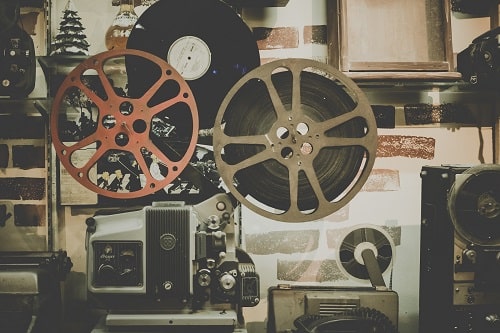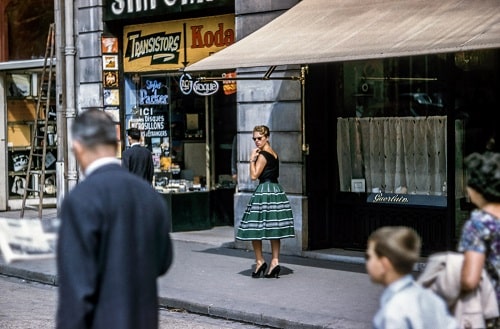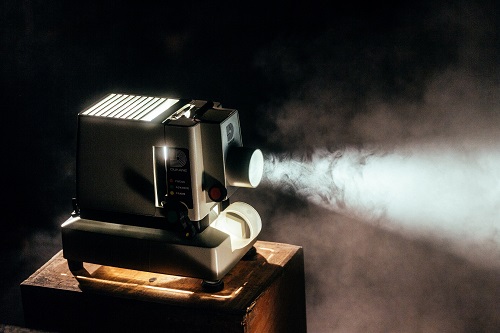James Bond is an instantly recognizable figure, globally renowned for his charm and wit. For more than half a century he has delighted moviegoers with his daring exploits and daring adventures in the world of espionage, ensuring that he will remain one of cinema’s most beloved characters for many years to come. Despite the passing of time, it appears as though James Bond’s popularity won’t be waning anytime soon. His timeless appeal continues to captivate fans all over the world.
However, what many people don’t realize is the amount of work and dedication that goes into making a James Bond film.
Behind the Scenes of James Bond: The Making of the World’s Most Famous Spy takes readers on a journey through the creation of these beloved films. From the initial concept and scriptwriting to the casting and filming, this article provides an in-depth look at the process of bringing James Bond to life on the big screen.
Through interviews with actors, directors, and producers, readers will gain insight into the challenges and triumphs of making a James Bond film. With a focus on the latest installment, this article will explore the technology and techniques used to create the heart-pumping action and stunning visuals that audiences have come to expect from this franchise.
The Origins of James Bond
James Bond is one of the most iconic characters in the history of cinema. The character was created by Ian Fleming in 1953, who wrote a series of novels featuring the suave British spy. Fleming was a former intelligence officer himself, and he drew on his own experiences to create the character of James Bond.
When Fleming wrote the first James Bond novel, Casino Royale, he did not expect it to become a huge success. However, the book was a hit, and Fleming went on to write 12 more novels and two collections of short stories featuring the character. The books were hugely popular, and they provided the basis for the James Bond film franchise.
The 1962 release of Dr. No, the very first James Bond film, was an enormous success and it marked the beginning of actor Sean Connery’s career in the series with six out of the initial seven films. These films were renowned for their captivating action sequences, remarkable gadgets and breathtaking exotic locations.
Over the years, the James Bond films have become a cultural phenomenon. The character has been played by six different actors, and there have been 25 films in the franchise. The films have grossed over $7 billion worldwide, making it one of the most successful film franchises of all time.
Casting the Perfect Bond
One of the most important aspects of any James Bond movie is the actor who plays the iconic spy himself. Over the years, there have been many talented actors who have taken on the role, each bringing their own unique style and interpretation to the character.
When it comes to casting the perfect Bond, there are a few key qualities that filmmakers look for. First and foremost, the actor must have a certain level of charm and charisma that can win over audiences. They must also be physically fit and capable of performing the intense stunts and action sequences that are a hallmark of the franchise.
Another important factor is the actor’s ability to bring depth and nuance to the character. While Bond is often portrayed as a suave and confident ladies’ man, there is much more to him than meets the eye. A great Bond actor must be able to convey the character’s vulnerabilities, flaws, and inner turmoil.
Over the years, there have been many actors who have embodied these qualities to perfection. Sean Connery, who originated the role in the 1960s, brought a rugged masculinity and effortless cool to the character. Roger Moore, who played Bond in the 1970s and 1980s, was known for his wit and charm. Pierce Brosnan, who starred in the 1990s and early 2000s, brought a more brooding intensity to the role.
Most recently, Daniel Craig has taken on the mantle of Bond, bringing a gritty, realistic edge to the character. While some fans were initially skeptical of his casting, he quickly won over audiences with his intense physicality and emotional depth.
Ultimately, casting the perfect Bond is no easy task, but when it’s done right, it can result in a truly iconic performance that will be remembered for generations to come.
Creating Iconic Bond Villains
One of the most iconic aspects of James Bond movies is the villains. From Dr. No to Blofeld, Bond has faced off against some of the most memorable villains in cinema history. But how do the filmmakers create such memorable characters? It all starts with the script.
The writers of the Bond films spend a lot of time developing the villains. They must be formidable opponents for Bond, but they also need to be complex characters with their own motivations and backstories. Once the script is finalized, the filmmakers begin casting.
Casting the right actor to play the villain is crucial. The actor must be able to bring the character to life and create a memorable performance. Some of the most iconic Bond villains, such as Javier Bardem’s Silva in Skyfall, were played by actors who were not originally considered for the role.
The costumes and makeup for the villains are also important. The filmmakers want the villains to have a distinctive look that sets them apart from Bond and his allies. The iconic metal teeth worn by Richard Kiel’s Jaws in The Spy Who Loved Me and Moonraker are a perfect example of this.
Overall, creating iconic Bond villains is a collaborative process that involves many different aspects of filmmaking. From the script to the casting to the costumes, every detail is carefully considered to ensure that the villains are memorable and stand out in the minds of audiences long after the credits roll.
Designing the Gadgets and Cars
One of the most iconic aspects of any James Bond film is the gadgets and cars that he uses throughout the movie. These items are often as important to the storyline as the characters themselves. Therefore, it is no surprise that a lot of effort goes into designing and creating these items.
The process of designing the gadgets and cars begins with the script. The writer will often include specific details about the gadgets and cars that Bond will use in the film. This information is then passed on to the production designer who will work with a team of designers and engineers to create the gadgets and cars.
The team will often start with sketches and drawings to get an idea of what the gadgets and cars will look like. Once they have a basic design, they will often create a full-scale model of the gadget or car to see how it looks and works in real life. This model will then be refined and adjusted until it is perfect.
Once the design is finalized, the team will then work on creating the actual gadget or car. This process can take months and often involves a lot of trial and error. The team will often create several prototypes before settling on a final design.
The gadgets and cars are often designed to be both functional and visually appealing. For example, the famous Aston Martin DB5 that Bond drives in Goldfinger was not only a beautiful car but also had several hidden gadgets, including a smoke screen, oil slick, and ejector seat.
In conclusion, designing the gadgets and cars for a James Bond film is a complex process that involves a lot of creativity and technical skill. However, the end result is often a collection of iconic items that are instantly recognizable and beloved by fans all over the world.
Filming the Action Sequences
Filming the action sequences for James Bond movies is no easy feat. It requires a lot of planning, coordination, and precision to ensure that the final product is both thrilling and believable. The team behind the scenes of James Bond movies takes great care to ensure that the action sequences are executed flawlessly.
One of the most important aspects of filming the action sequences is safety. Stunt performers and actors must be protected at all times, and the crew takes great care to ensure that all safety measures are in place before filming begins. This includes everything from ensuring that the performers are properly trained to use the equipment to having medical personnel on standby in case of an emergency.
Another important aspect of filming the action sequences is the use of special effects. The team behind the scenes of James Bond movies uses a variety of special effects to create the illusion of danger and excitement. This includes everything from explosions and gunfire to car chases and aerial stunts.
To capture the action sequences on film, the crew uses a variety of techniques. This includes hand-held cameras, drones, and even helicopters. The goal is to capture the action from multiple angles to give the audience a sense of being right in the middle of the action.
Overall, filming the action sequences for James Bond movies is a complex and challenging process. It requires a lot of planning, coordination, and precision to ensure that the final product is both thrilling and believable. But with the right team behind the scenes, anything is possible.
The Music of James Bond
One of the defining features of the James Bond franchise is its iconic music. From the first film, Dr. No, to the most recent release, No Time to Die, the music has played an integral role in setting the tone and enhancing the action on screen.
The original James Bond theme was composed by Monty Norman, with arrangements by John Barry. The theme has since become synonymous with the character of James Bond and is instantly recognizable around the world. In addition to the theme, each film has its own unique soundtrack, with many of the songs becoming hits in their own right.
Over the years, many well-known musicians have contributed to the James Bond soundtracks. Some of the most notable include Paul McCartney, who wrote and performed the theme song for Live and Let Die, and Adele, who won an Academy Award for her theme song for Skyfall.
The music of James Bond has also had a significant impact on popular culture. The James Bond theme has been sampled and referenced in countless songs, and the franchise has inspired many other films and TV shows to incorporate similar musical elements.
Legacy of James Bond
Since the release of the first James Bond film, Dr. No, in 1962, the franchise has become a cultural phenomenon. The films have grossed over $7 billion worldwide, making it one of the highest-grossing film franchises of all time.
James Bond has become an iconic character, known for his suave demeanor, impeccable style, and daring stunts. The franchise has also had a significant impact on popular culture, inspiring countless parodies, spoofs, and homages.
But the legacy of James Bond goes beyond just entertainment. The films have also had a significant impact on the film industry as a whole. The franchise has pushed the boundaries of special effects, stunts, and action sequences, influencing countless other films in the process.
In addition, the James Bond films have helped launch the careers of many actors, including Sean Connery, Roger Moore, Pierce Brosnan, and Daniel Craig. The films have also provided opportunities for women and people of color, with actresses like Halle Berry, Naomie Harris, and Léa Seydoux taking on prominent roles in recent films.
Overall, the legacy of James Bond is one of innovation, impact, and cultural significance. The franchise has become a global phenomenon, inspiring countless fans and filmmakers alike.



 RELATED POSTS
RELATED POSTS





0 Comments